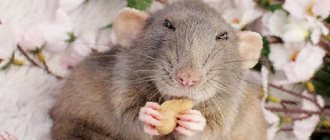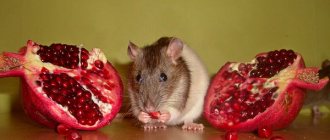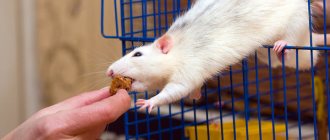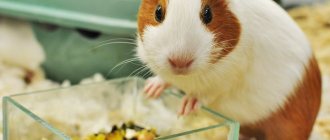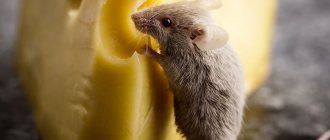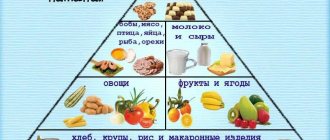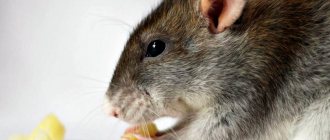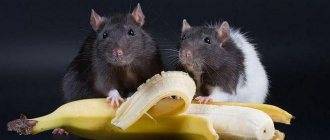When keeping a domestic rat, its diet is very important, which should be varied. Thanks to this diet, the pet will receive all the useful vitamins and microelements, and will also increase its life expectancy. As you know, your pet gets a lot of vitamins from consuming vegetables, fruits and fresh herbs. Therefore, in addition to dry food and animal protein, the diet of a domestic rat should include a variety of vegetables, fruits and herbs. But this omnivore should not be fed these foods indiscriminately. Therefore, the answer to the question can rats eat vegetables is yes, they can, but not all of them. What vegetables can a rat eat, in what quantity and in what form we will look at in our article.
Is it possible to feed a decorative rat cabbage?
People eat cabbage raw or in many dishes, but can pet rats eat cabbage? This vegetable can cause problems for some pets, so are there rats among them? Cabbage is closely related to broccoli, cauliflower, and Brussels sprouts, and its color can range from white to green or purple. It was introduced into culture around 1000 BC. e. in Europe, and today it is pickled, steamed, stewed, boiled, fried or simply eaten raw in salads.
Animal proteins
Twice, or even three times a week, animals are supposed to receive animal proteins. The following can be served at the table:
- boiled lean meat;
- hard-boiled chicken or quail eggs;
- mealworm, zoophobus (zophobas), gammarus;
- seafood;
- high quality cat or dog dry food.
From poultry, you can give chicken breast, but it is better to feed turkey, which is not fed with growth hormones. From ungulates you can take beef, lean lamb, and game. It is better to grind the boiled yolk with water so that the rat does not choke. You should not feed fatty pork and its derivatives to rats.
Store-bought beef should be soaked for 2-3 hours before cooking, and chicken should be boiled in several waters to remove harmful substances. Rats can suffer from allergies.
Effects on rats
Rats are omnivores and they can eat a wide variety of foods, but some of them can still be harmful to them. The basis of the diet of decorative rats should be specialized grain feeds, since they contain most of the nutrients they need. As a treat, you can add small amounts of fruits or vegetables, and cabbage can be one of them, but the amount should be small.
It has been observed that too much cabbage can cause severe diarrhea in rats, so start with very small portions until you are sure there is no negative reaction. Also, you should not give cabbage every day. Red cabbage has more serious side effects, so only offer white or green cabbage to your rat.
These vegetables contain some sulfur and cause gas in both humans and our pets, which can cause problems for their little tummies. Rats lack a gag reflex. You won't see your rat burping to release some gas, which means that some of the gas-forming foods increase the risk of choking.
Red cabbage and Brussels sprouts contain a substance that causes thiamine (vitamin B1) deficiency in rats, and this can lead to serious health problems, so try to keep these vegetables away from your pet.
Causes of atherosclerosis
The fact is that due to systematic additional loads, microdamages can form on the walls of the arteries. Damaged tissues swell. Cells that respond to inflammation (for example, white blood cells) accumulate around the damage, and fat and cholesterol that float in the blood also cling to them - a cholesterol plaque is formed. It is no longer possible to get rid of it using completely non-invasive methods. At the same time, the walls of the vessels become coarser and thinner - this pathological condition is called atherosclerosis, which in turn can lead to coronary artery disease and causes the need for “cleansing of blood vessels”.
Thus, it is important not only to eat right, but also to maintain the functional state of the cardiovascular system.
Nutritional value of cabbage
Cabbage is rich in dietary fiber and is also an excellent source of vitamins C and K. It also contains several B vitamins, small amounts of carbohydrates, sugars and minerals. The most important minerals are calcium, potassium, phosphorus, sodium and magnesium, as well as iron and zinc.
Antioxidants such as choline, beta-carotene, lutein and zeaxanthin are found in higher quantities in red cabbage and they provide anti-inflammatory properties and also stimulate enzyme activity, inhibiting the growth of malignant tumors.
This is excellent for people, as it improves our heart health, immunity, and reduces the risk of cancer. Fiber improves digestion, prevents constipation and removes toxins.
Meat
Meat and fish are recognized as the main sources of protein. It is also very important to introduce hearts, kidneys, liver and tubular bones of birds into the diet of a domestic rat. Feed your pet only meat and fish that are not too fatty. The best feeding option is pre-boiled meat, cut into small pieces. Never give your animal high-temperature food; wait until the meat cools down. It is worth noting that frozen meat is not suitable for feeding rats. An excellent addition to a healthy rat diet would be low-fat broth without various spices and additives.
What you can and cannot feed rats
On every resource for rat lovers, along with a general description of the rat’s diet, there is always a topic “dos and don’ts for rats”, in which there is a discussion of products, the effect of which on the health and well-being of rats, rat breeders are not sure. And this is not without reason: many foods can harm rat health. For example, citrus fruits contain a lot of acid, which can damage the mucous membrane of the animal’s stomach and lead to its inflammation (gastritis), legumes and cabbage cause increased gas formation, which can lead to bloating and related problems, etc. As you can see, they are quite ordinary products can lead to very unpleasant consequences. To avoid anything unexpected happening when introducing a new product into a rat’s diet, you can always turn to experienced rat breeders for advice, for example, in the topic “Feeding: dos and don’ts” on the Ratmaniya forum. On this page you can see the experience of many rat breeders, analyzed and collected in one table. I hope the information is useful to you.
For ease of searching, the table is divided into product groups and currently consists of four columns:
“Product Name” refers to the names of the products, which are listed in alphabetical order.
«+/-» - this is the main criterion for whether this product can be given to rats or whether it is better to abstain. There are five categories: dark green (++) - possible without any restrictions, green (+) - possible with reservations, yellow (+/-) - be careful, problems may occur in individual animals, orange (-) - undesirable, because potentially dangerous product, red (—) - product dangerous for rats.
“Comments” - many products, especially dangerous or potentially dangerous, have comments written on them, which you can also rely on in your decision.
“Allergenicity” - there are also allergy sufferers among rats, and highly allergenic foods should first be given only in small quantities, checking the rat’s body’s reaction to them.
Note: theoretically, any product (be it a vegetable, fruit, grain, animal protein or something else) can cause an allergic reaction, so the main rule when introducing a new product into a rat’s diet is to give only a small portion for the first time and monitor the reaction.
Green food
A caring owner needs to monitor the consumption of greens by a pet rat. List of prohibited green food:
- bugs and horseradish contain substances harmful to animals - essential mustard oils;
- sorrel spinach are a source of oxalic acid, which is dangerous for the pet’s body;
- You can’t feed rhubarb to animals, because it causes disruption of the gastrointestinal tract;
- seaweed has a high iodine content.
Can rats eat cabbage?
If you are a pet rat owner, I'm sure you have a lot of questions about what they can and can't do. At the end of the day, you want to make sure you're giving them food that's good for them so they can thrive and be as healthy as possible.
After all, foods that are healthy for us humans aren't always healthy for our pets. To answer this question, I did some research to determine if there was anything in this vegetable that could be harmful to the health of pet rats. Today I will share my findings with you. Let's start!
The short answer is: yes, rats can eat cabbage without any problem. This vegetable contains many essential vitamins and minerals that will benefit your rat. Additionally, since it is very low in calories and fat, there is little risk of overfeeding your rat.
Why do blood vessels become clogged?
Vessels become blocked for various reasons, but most often this occurs due to cholesterol plaques and the deposition of calcium salts (calcinosis). The mechanism for the formation of such blockages is more complex than it seems, and it lies behind our everyday habits - even the most harmless at first glance. For example, when we eat highly salty foods
, blood thickening and fluid retention occur - blood pressure increases.
When we experience stress
, the hormones adrenaline and norepinephrine are produced - key vessels narrow, and pressure increases because the amount of blood that the heart needs to push remains unchanged. In a normal healthy state, the vessels cope with such loads, but over time, serious problems can begin, and this is not only hypertension.
What's in cabbage?
To find out if this vegetable is suitable for rats to eat, let's look at what nutrients cabbage contains.
100 grams of this vegetable contains the following macroelements:
- 28 calories
- 0.4 grams fat
- 5.6 grams carbohydrates
- 2 grams fiber
- 1.3 grams sugar
- 1.9 grams protein
If you look at the nutrition profile above, you will see that kale is very low in calories but contains a decent amount of fiber and protein.
In addition, cabbage contains the following vitamins and minerals:
Vitamin A
If you want to nitpick, kale doesn't actually contain vitamin A. However, it does contain beta-carotene, which rats can convert into vitamin A in their bodies, just like humans. This vegetable is very rich in beta-carotene, which means it provides your rat with a good amount of vitamin A.
Vitamin A is essential for your rat. Research has shown that if rats do not get enough vitamin A, they can become anemic and dehydrated.
Vitamin K
Another vitamin that this vegetable is very rich in is vitamin K. Vitamin K is essential for rodents such as rats and mice because it helps them with blood clotting. If they don't get enough of it, they may develop hemorrhage.
Vitamin C
Most vegetables contain vitamin C, and cabbage is no exception. It contains a good amount of this vitamin. Vitamin C is an antioxidant that helps the rat's immune system and prevents DNA damage. Biological tests have shown that rats can synthesize their own vitamin C in their bodies. However, the dietary vitamin C they get from food is not harmful to them in any way.
Manganese
Manganese is a mineral that cabbage is quite rich in. In rats, manganese helps the brain function properly and is also beneficial for the nervous system.
Other vitamins and minerals
Apart from this, cabbage also contains decent amounts of B vitamins, copper, calcium, potassium, antioxidants, iron and phosphorus.
Overall, this plant is rich in vitamins and minerals, making it a great vegetable to include in your rat's diet.
Basic nutrition rules
In case of diabetes mellitus, it is necessary to follow nutritional rules that help improve the patient's condition.
- Counting grain units (XE), (UE). This is a daily must for insulin-dependent patients. One such indicator is equal to 12-15 g of easily digestible carbohydrates and increases SC by 2 mmol/l. The diet can be changed if the value of XE in food is known. It is recommended to replace bread units with food that is similar in the rate of absorption of substances. All vegetables other than potatoes can be ignored, but other foods with carbohydrates must be counted.
- BZHU. It is worth dividing the consumption of proteins, fats and carbohydrates evenly throughout the day between 5 meals. It is better to take fruit as a snack.
- Simple carbohydrates. It is advisable to avoid or completely remove easily digestible organic compounds from the diet. This list includes semolina, rolled oats, mashed potatoes, jam, candies, marshmallows, marmalade, condensed milk, halva, jam, etc.
- Cellulose. For diabetes mellitus, vegetables are consumed three times a day. More fiber and less refined foods. To make diet planning easier, there is a formula: 50% - vegetables, 25% - carbohydrates, 20% - proteins, 5% - mixed foods.
- Starvation. It is strictly forbidden to go hungry; it is not only harmful, but also increases the risk of buying unhealthy foods.
- Weight loss. It’s worth getting rid of extra pounds gradually but steadily. An excellent result is considered to be 3 kg per month. If you have diabetes, short-term diets and taking fat-burning medications are prohibited. When glucose levels drop, the body stores fat.
- Reducing salt. Consumption of the product should be kept to a minimum. Salt retains fluid in the body, which increases blood pressure and increases the load on the kidneys.
- Alcohol. In rare cases, you can drink alcohol, but it is worth remembering that it contains calories and increases the risk of hypoglycemia.
- Fresh food. There is no need to prepare food for future use; the healthiest thing is a freshly prepared dish.
These are the basic rules of healthy eating and recommendations for people with diabetes.
How to feed cabbage to rats?
Rats can eat this vegetable either cooked or raw. However, one thing you should consider when feeding this plant raw is pesticides. Unfortunately, cabbage is one of the most pesticide-contaminated plants in the world. As a result, you should make sure that you wash the plant properly before giving it to your rat.
The best way to remove pesticides is to wet it with a mixture of baking soda and water. However, if you don't have baking soda, you can wash it under water. Just wash it for at least a minute.
Boiling cabbage will also remove pesticides. However, when you cook vegetables, you must remember that you will destroy some of the nutrients in the plant. For this reason, it is usually better to steam rather than boil.
Never fry cabbage if you are going to feed it to a rat because the oil used in the frying process is not suitable for them.
Also, never add salt or any spices to vegetables. This is not good for your rats.
Also, don't worry about which parts of the cabbage you can feed your rat. Rats can consume whole vegetables, including the stems.
Fruits
All citrus fruits should be immediately excluded from the diet of rats due to acidity.
. Occasionally you can give a piece of sweet tangerine. Forest and garden berries must be sorted according to their acid level. Thus, cranberries, which are useful in many respects, should be given with caution because of their taste.
Sweet cherries are more suitable than sour cherries. Never give animals seeds from fruit trees or citrus fruits.
They can be poisonous to rodents. You should pay attention to the special properties of fruits. Chokeberry and bird cherry strengthen, and plum weakens. This must be taken into account when choosing food. Pear can cause fermentation in some individuals. Watermelons and melons can be given in small quantities and only in season, as they accumulate nitrates.
Dried fruits are too sweet and may cause fermentation. They should be given carefully, as a treat.
Do rats like to eat cabbage?
Most rats love cabbage, but you never know if your particular rat will like it until you give it to them. Chances are your rat won't eat it at all.
If your rat doesn't want to eat cabbage, try feeding it differently. For example, if you were trying to give them cheese, try steaming it instead. If they still don't want to eat it, don't worry. Your rat can live just fine without cabbage if you replace it with other vegetables.
Source
Special cases
Sometimes you can feed the animals with baby food in the form of puree from jars. Children's or diabetic cookies without sugar or sweeteners can act as a treat.
Dark chocolate will not harm you if you give it infrequently. Rats should not be given tea or coffee, and herbal infusions are safe only if prescribed by a doctor. Sweets, jam and chips are excluded.
The set of permitted products is shown in the table.
Table of permitted and prohibited products
What vegetables can a rat eat and in what quantity?
When keeping a domestic rat, its diet is very important, which should be varied. Thanks to this diet, the pet will receive all the useful vitamins and microelements, and will also increase its life expectancy. As you know, your pet gets a lot of vitamins from consuming vegetables, fruits and fresh herbs. Therefore, in addition to dry food and animal protein, the diet of a domestic rat should include a variety of vegetables, fruits and herbs. But this omnivore should not be fed these foods indiscriminately. Therefore, the answer to the question can rats eat vegetables is yes, they can, but not all of them. What vegetables can a rat eat, in what quantity and in what form we will look at in our article.
Criterias of choice
If you still want to treat your little rodent with a treat, you need to understand the right choice of fruit.
The banana should not contain any green coloring, otherwise you will feed your pet solid starch. There should be small black spots on it, which means the fruit is ripe. You can also determine ripeness by smell. A yellow banana will have no odor, but the aroma of the spotted yellowish fruit will not let you pass by.
Remember, the main diet of rats: cereals, grains, dairy products and lean meat. Banana is a fruit that provides vitamins to animals. Protein is necessary for full functioning and health. It supports immunity and develops bones and muscle tissue.
Knowing all the subtleties in choosing and consuming bananas, you can not only not harm the little rodent’s body, but also please him with a pleasant treat from which he will receive the necessary vitamins.
Let us list the “top three” among such myths:
1. Rats are “scavenger” animals, so you can feed them table scraps and not entirely fresh food.
2. Rats are rodents and can only be fed grain and special food.
3. Rats should not eat meat or fish.
All this is pure fairy tales and in this article we will help you choose the right diet for your pet. So, let's make a diet:
Basic principles of proper nutrition for rats: 1. Food should always be fresh.
2. It should not contain products harmful to rats (see list below)
3. It must contain all the vitamins, minerals and other microelements the rat needs.
4. Food should be given to an adult rat 1-2 times a day (provided there is dry food in the cage), and to a baby rat 2-4 times a day.
Products that can be given to the average rat (without taking into account personal characteristics and physical condition): 1. Fruits: apples, pears, bananas, citrus fruits, plums, peaches, apricots, dates, grapes, persimmons, cherries, raisins, dried fruits...
2. Berries: raspberries (they love them very much!), blueberries, wild strawberries, strawberries, currants, cranberries...
3. Vegetables: potatoes (boiled!), cabbage (raw and boiled) - white, broccoli, cauliflower, kohlrabi, Brussels sprouts, tomatoes and cucumbers (raw), radishes, carrots, pumpkin, melon, watermelon, onions, garlic, eggplants and etc.
4. Greens: dill, parsley, celery, cilantro, radish greens.
5. Meat: boiled meat (any), fish, seafood; meat food for small kittens, meat baby food, bones (unroasted).
6. Protein foods: yogurt (preferably without filler, not very fatty), cottage cheese, kefir, fermented baked milk, baby food.
7. Grains: corn, oats, wheat, millet, flax grains, pumpkin and sunflower seeds, barley, oatmeal, etc.
8. Soy products.
9. Dry food: dry pasta, nuts, dried dandelion and nettle greens.
10. Other: boiled pasta, porridge, low-fat broths, bread, crackers, boiled rice...
11. Prepared foods: see “Recommended foods and treats”
12. Vitamin supplements: drops, fish oil, special. vitamins for rodents
13. Mineral supplements: chalk, mineral stones for rodents.
For diets for rats that suffer from obesity, dermatitis and other diseases, see “Veterinary Medicine” in the appropriate section.
Foods that should not be given to rats:
2. Too fatty
3. Very salty
4. Spoiled products
5. Chocolate and products containing it
6. Carbonated and alcoholic drinks
7. Raw: potatoes, beans, red and Brussels sprouts, artichokes, tofu (bean curd)
How to feed vegetables
All foods that are intended to be fed to a rat must be fresh, clean and at room temperature. Therefore, if you store vegetables in the refrigerator, then first remove them from there, wait until they warm up, rinse well, cut, and only then offer them to your pet. It is best to feed rodents vegetables grown in your own garden. If you buy products at the market, you should choose very carefully, buying only in season.
Vegetables and root crops must be prepared for feeding. They are sorted through, throwing out the rotten, flabby, and discolored ones. In addition, you need to remove debris and dirt, cut off the affected areas, wash the vegetables and cut them into pieces. The pieces should be of such a size that the pet can hold it in its paws.
Vegetables should be offered to your pet daily or every other day. The approximate average portion of vegetables and fruits per individual should be 10-15 grams.
New foods are introduced into the rat’s diet gradually in small portions once or twice a week. It is necessary to constantly monitor the pet; if there are no signs of diarrhea, then you can increase the amount of this product. If you notice signs of diarrhea, then remove this product from the rodent’s diet and feed it the same food.
Dairy products
As you know, fermented milk products - yogurt, cottage cheese, kefir, are very healthy. They are a source of calcium and contain lacto- and bifidobacteria, which normalize intestinal function. This food can be fed to a domestic rat with virtually no restrictions; rats really like this food. But if your pet is lactose intolerant, then you should refuse such food. In order not to harm your pet's health, offer him a small amount of the selected fermented milk product. And if the rat does not have an intestinal disorder, then you can feed your rodent this food.
For rats, you need to choose fermented milk products with low fat content, without sugar and various additives. Low-fat foods are also not recommended.
And no matter how healthy fermented milk products are, some breeders are still afraid to give them to their pets, others sometimes feed them about several times a month, and still others feed rodents with such food several times a week. But this does not in any way affect the health of the pets or their life expectancy. Therefore, only you, as the owner of a rat, must decide for yourself whether to feed your pet fermented milk products.
Tomatoes
Can rats eat tomatoes? The answer to this question is also positive. But these vegetables should only be given when ripe and in small quantities, since they contain acids. Unripe fruits contain solanine, just like leaves and tops, so they should not be fed. Pickled and canned tomatoes are also contraindicated for pets. If you do not grow your own vegetables, then tomatoes can only be given to rats during the season.
Pepper
Bell pepper contains many vitamins. Therefore, rats can have pepper, but only once a day, if your pet is not prone to increased gas production.
Eggplant
Inexperienced breeders are often interested in whether rats can eat eggplants. Before feeding this vegetable to your pet, it is necessary to wash it well, peel it and heat it. Leaves and tops should not be fed to a rodent because of the solanine they contain.
Cabbage
But can rats eat cabbage? Red, white, and Brussels sprouts should not be given to pets, since this vegetable increases gas formation in rats. Broccoli and cauliflower can be eaten in small quantities and only for individuals who are not prone to increased gas formation.
Carrot
Rats can eat carrots raw. Just do not overfeed your pet with this vegetable to prevent intestinal upset. Also, overeating carrots can cause allergies and hypervitaminosis, which in turn leads to eye problems.
Zucchini
Can rats eat zucchini? Zucchini and zucchini can be given raw, boiled or steamed.
Potato
Can rats have potatoes and in what form can they be given to them? Raw potatoes should not be fed to your pet due to their high starch content. Offer your rodent a small piece of boiled potato, but no more than a couple of times a week. It is also prohibited to feed potato tops, sprouts and green tubers to rats, as they contain poisonous solanine. Do not give your pet chips, even as a treat.
Corn
Corn can be offered to rats raw or cooked, only in small quantities as a treat. Canned corn should not be fed to pets. You can also offer your pet popcorn as a treat, only if you made it yourself, without salt, sugar or spices.
Beet
Can a rat eat beets? It is possible, but not often and in small quantities, since this vegetable has a laxative effect. You can give beets raw or boiled.
Radish
Can rats have radishes? Radishes and turnips increase gas production, so they should not be fed to rats. Although there are messages on forums about feeding pets with these products. But we do not recommend doing this. Do not give your pet foods that may cause him discomfort.
Pumpkin
Pumpkin is a very healthy vegetable because it contains fiber, proteins, vitamins and other beneficial substances. Therefore, to the question: can rats eat pumpkin, there is one answer - yes, they can. Pumpkin is fed to rodents raw and boiled. You can also offer your pet pumpkin seeds, they are healthier than sunflower seeds. In addition, they are an excellent prophylaxis against helminths. But you also shouldn’t overdo it with them, since they are fatty. A rat can be given no more than 10 pieces. in Week.
Onion and garlic
Onions and garlic are very spicy for rats and your pet may refuse to eat them, but a rodent may like young green onions. Onions and garlic are most often offered as an antibiotic and antiviral agent for diseases, only in small quantities.
Peas
Peas increase gas formation, so it is not advisable to feed them to rats. You should also not feed your pets canned green peas. But you can occasionally offer your pet some fresh green peas, either from the pod or boiled.
Beans
Rats should not eat raw beans and other legumes, as they increase gas formation. But there is an opinion that sometimes legumes can be offered to rodents only after heat treatment.
Rats can diversify their diet with various vegetables, both raw, boiled and steamed. Boiled ones, in turn, can be offered to your pet in the form of small pieces or puree. But most importantly, try not to give vegetables that could harm your pet or cause discomfort. These vegetables can be very healthy with a huge amount of vitamins. But if they can make a rat feel bad, then why experiment on the animal and try to feed it with foods that are not recommended to be fed to these rodents.
Love your pets, follow the rules of care and feed them correctly. Now you know what vegetables a rat can eat, and which ones your pet should refrain from eating.
Source
What should you remember when feeding your pet rodent?
First of all, it is worth understanding the difference between a domestic rat and a street gray “beast”. Representatives of the second species are dangerous to humans. They are carriers of diseases and are omnivores. Each homeowner, independently or with the help of special services, tries to eliminate street rats. But a pet has many differences:
- a clean animal and does not spread pathogens;
- smaller in size;
- afraid of drafts and prone to colds;
- not considered omnivorous.
Decorative rats are not carriers of infections and are very clean
All these facts point to special care and ways of creating a rodent’s diet.
Feeding a pet rat
Any type of rat at home should have a balanced diet. It should include vitamins, cereals, fresh vegetables and fruits, and cereals. Don't forget about chalk and branches of fruit trees. These two products help sharpen your teeth and at the same time clean them. Rusks and cabbage rolls are an excellent way not only to refresh yourself, but also to strengthen the tooth enamel of a rodent. But you shouldn’t overfeed either.
Special feeds containing various cereal crops are sold
Let's move on to gastronomic preferences. All types of rats love cheese. But you shouldn’t give them in large quantities. The intestines can quickly become clogged and the pet will have problems with its functioning. Variety is good, but you should understand that animals are small and frequent changes in food lead to problems with digestion and liver function.
Feeding a pregnant rat
Like any pregnant woman, a decorative rat needs increased nutrition and a large amount of useful and necessary vitamins and minerals. The diet immediately includes boiled poultry and fish. Cartilage from chicken bones is suitable. Vegetables and fruits – apples. Can rats eat grapes in this position? Grapes are always useful. But in order for the female to give birth well, and the pups not to be too large, the grapes are limited to a minimum. At the same time, completely exclude the seeds from the grapes. Liver, fresh wheat grass and broccoli also fall under minimalism.
The first half of pregnancy is the most important for bearing. Therefore, experts strongly recommend not to overfeed your pet, but instead of feeding it twice a day three times a day. Tomatoes and onions become dangerous.
The second half of pregnancy provides an opportunity to increase the female’s diet. Now you can include in the menu in addition to meat and fish:
- cottage cheese and apples;
- nettle and cartilage;
- porridge.
Rats can eat apples in small quantities
The same foods and grapes fall under the taboo. All types of seeds and cucumbers. Even raisins are completely prohibited.
Feeding a newborn rat
After giving birth, females become aggressive, as they must protect their offspring. But aggression will not affect nutrition in any way. It must be complete and balanced. In fact, we continue to feed exactly as during pregnancy. But now it is necessary to provide a large amount of liquid. Be sure to add cheeses and milk to the menu. But bananas, grapes and persimmons remain taboo. But can rats have persimmons to pamper them? In no case. The fruit is poorly digested and does not allow normal excretion of feces.
Need to know! It is important for all species and ages of the rat family to have protein food daily. If there is an insufficient amount of necessary substances, namely protein, individuals begin to get sick
As for small rats, the deficiency will lead to weakened immunity, underdevelopment of bone and muscle tissue.
Feeding small rodents
Until a month of life, the mother provides nutrition and all the necessary substances for the development of the cubs. Complementary feeding or a complete transition to adult food occurs every month. From this moment on, the small animal should receive meat, fish and cottage cheese. Apples and corn (young). The list of forbidden foods included: lettuce, cucumber, tomato, mushrooms, yolk and, of course, broccoli.
The mother will provide food for the first month of life for the rat pups.
